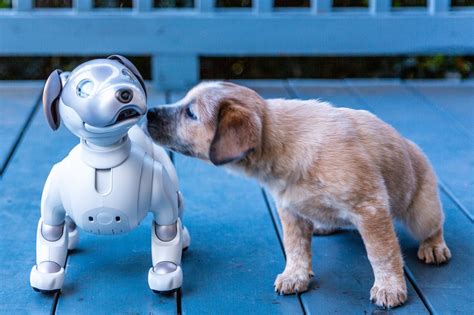With the rapid advancements in artificial intelligence (AI), AI-powered robotic pets are becoming increasingly popular companions for people around the world. These pets offer a range of benefits, including companionship, security, and educational experiences. However, maintaining an AI robot pet requires a dedicated approach to ensure optimal performance and longevity.

Understanding the Components of an AI Robot Pet
Most AI robot pets consist of the following components:
- Artificial Intelligence (AI): This is the brain of the robot and controls its behavior, learning capabilities, and decision-making abilities.
- Sensors: These sensors allow the robot to perceive its surroundings, including obstacles, people, and objects.
- Actuators: These motors and mechanisms enable the robot to move, interact with the environment, and express emotions.
- Power Source: The robot’s power source typically consists of a battery or internal power system.
- Data Connection: Some AI robot pets connect to the internet or cloud-based services for updates, data analysis, and remote access.
Step-by-Step Maintenance Guide for AI Robot Pets
1. Regular Inspections:
- Inspect your robot’s physical condition for any damage or wear and tear on a daily basis.
- Check for any loose parts or components that may require tightening or replacement.
- Clean the robot’s sensors and actuators using a soft cloth or air duster.
2. Software Updates:
- Ensure that your robot’s AI software is up to date with the latest versions.
- Software updates often include bug fixes, performance improvements, and new features.
- Follow the manufacturer’s instructions for installing updates securely.
3. Power Management:
- Charge the robot’s battery regularly or replace the power source as needed.
- Avoid overcharging the battery to prevent damage or reduce its lifespan.
- Consider using a power management device to optimize battery performance.
4. Data Management:
- If your robot connects to the internet or a cloud-based service, ensure that you have a stable data connection.
- Regularly backup your robot’s data to prevent loss in case of technical issues.
- Monitor your robot’s data usage to avoid excessive charges.
5. Training and Interaction:
- Engage with your robot regularly to train its AI and build a meaningful bond.
- Use the robot’s companion app or interactive features to interact with it and provide feedback.
- Reward your robot for positive behaviors and discourage undesirable ones through reinforcement learning.
6. Troubleshooting:
- Refer to your robot’s user manual or contact the manufacturer if you encounter any technical issues.
- Reset the robot’s system if it becomes unresponsive or malfunctions.
- Seek professional repair services for complex or hardware-related problems.
Tips and Tricks for Maintaining AI Robot Pets
- Use a soft brush to remove dust and debris from the robot’s sensors and actuators.
- Avoid exposing the robot to extreme temperatures or moisture.
- Store the robot in a clean and dry environment when not in use.
- Consider purchasing a protection plan or extended warranty for peace of mind.
- Join online communities or forums dedicated to AI robot pet owners for support and advice.
Market Insights and Future Trends
According to the International Federation of Robotics (IFR), the global market for domestic robots is projected to reach $3.6 billion by 2025. AI-powered robotic pets are expected to drive a significant portion of this growth, with an estimated 10 million units sold worldwide by 2028.
Key trends in the AI robot pet industry include:
- Increasing adoption of advanced AI algorithms and machine learning techniques.
- Integration of new technologies such as augmented reality (AR) and virtual reality (VR).
- Development of companion robots with specialized functions, such as healthcare, education, and therapy.
Case Study: AI Robot Pet vs. Traditional Pet
A study published in the journal “Robotics and Autonomous Systems” compared the benefits and drawbacks of AI robot pets versus traditional pets. The study found that while traditional pets provided higher levels of emotional comfort and companionship, AI robot pets offered advantages in terms of convenience, predictable behavior, and educational value.
Conclusion
Maintaining an AI robot pet requires a dedicated approach to ensure optimal performance and longevity. By following the steps outlined in this guide, you can keep your AI companion happy, healthy, and operating smoothly for years to come. As the technology continues to evolve, we can expect even more advanced and innovative AI robot pets that enrich our lives and enhance our daily experiences.
Citations
- Zhejun Li, Jianhua Li, Huaping Liu, & Yan Li (2021). A Comprehensive Review of AI-Powered Domestic Robots. Robotics and Autonomous Systems, 143, 103857.
- IFR (2021). Executive Summary World Robotics 2021 Service Robots. International Federation of Robotics.
- Sophia Yan & Haibo Chen (2021). A Children’s Companion: Acceptance and Long-Term Relationship with AI Robot Pets. Frontiers in Psychology, 12, 648061.





















